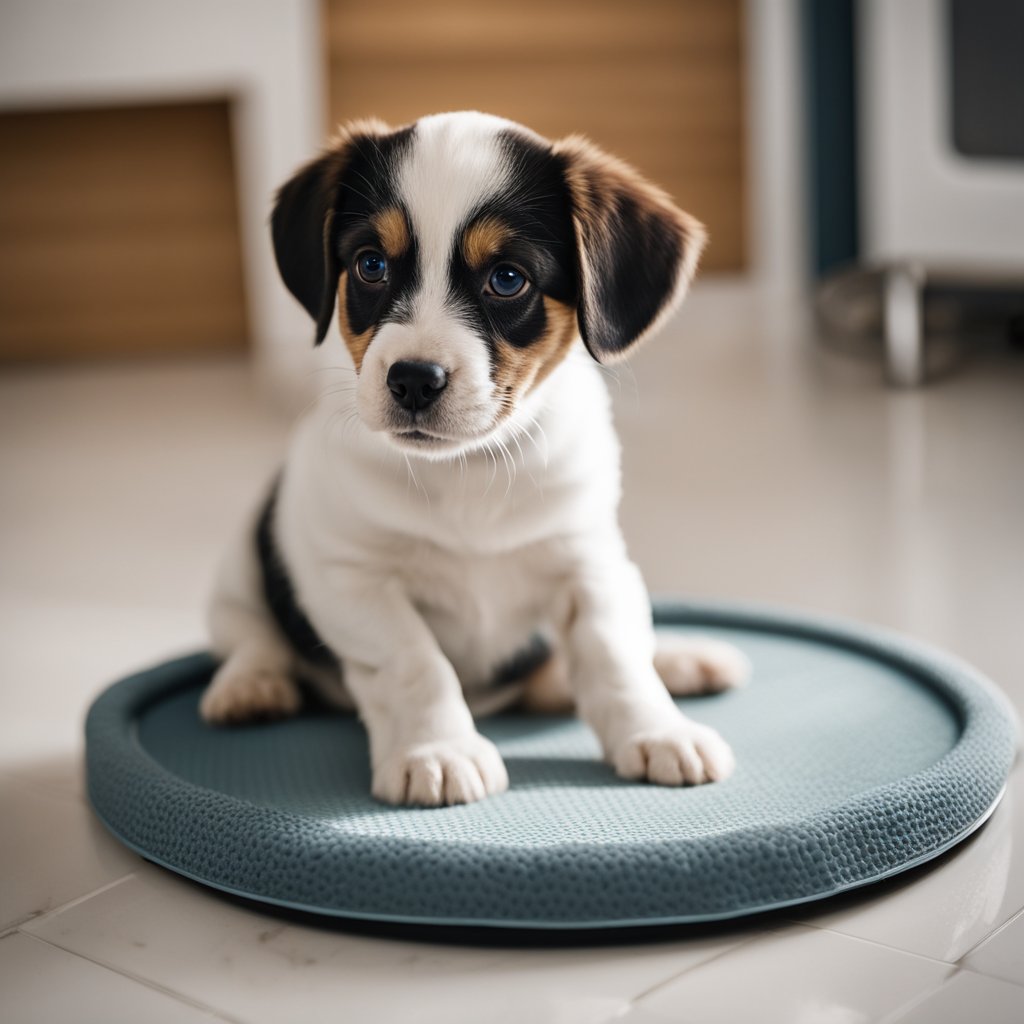Potty Train Your Puppy: A Comprehensive Guide
Potty training your puppy is an essential part of owning a dog. It’s important to start the training process as soon as possible to ensure your puppy is well-behaved and doesn’t cause any messes in your home. With patience, consistency, and positive reinforcement, you can successfully potty train your puppy and avoid any accidents in the house.
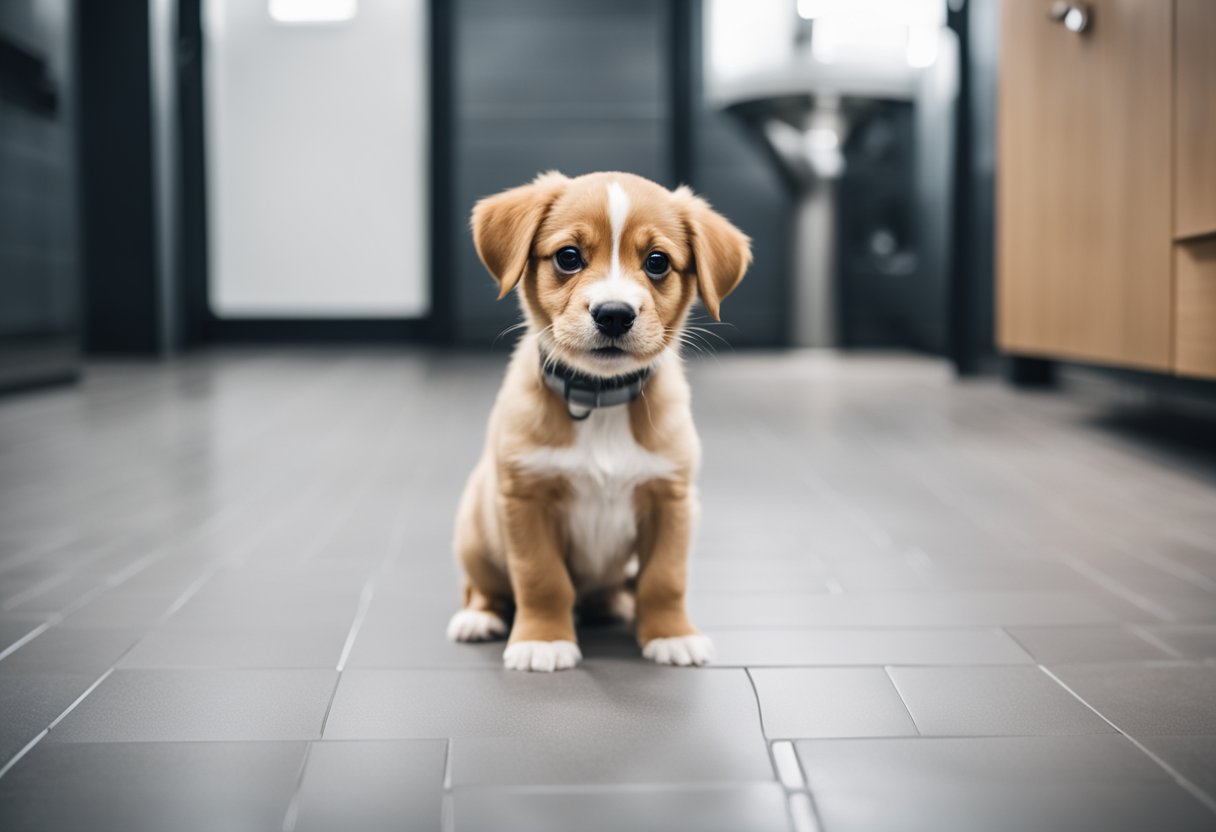
Preparing for Potty Training is the first step to successfully training your puppy. You’ll need to purchase the necessary supplies, such as a crate and puppy pads, and establish a routine for your puppy. It’s important to keep in mind that accidents will happen, so be prepared to clean up any messes and avoid punishing your puppy for mistakes.
Executing the Training involves teaching your puppy where to go potty and rewarding them for good behavior. This can be done through crate training, leash training, and positive reinforcement. It’s important to be consistent with your training and to avoid giving your puppy too much freedom too soon. With time and patience, your puppy will learn to go potty outside and you’ll have a well-trained companion.
Key Takeaways
- Preparing for Potty Training involves purchasing necessary supplies and establishing a routine for your puppy.
- Executing the Training involves teaching your puppy where to go potty and rewarding them for good behavior.
- Consistency and positive reinforcement are key to successfully potty training your puppy.
Preparing for Potty Training
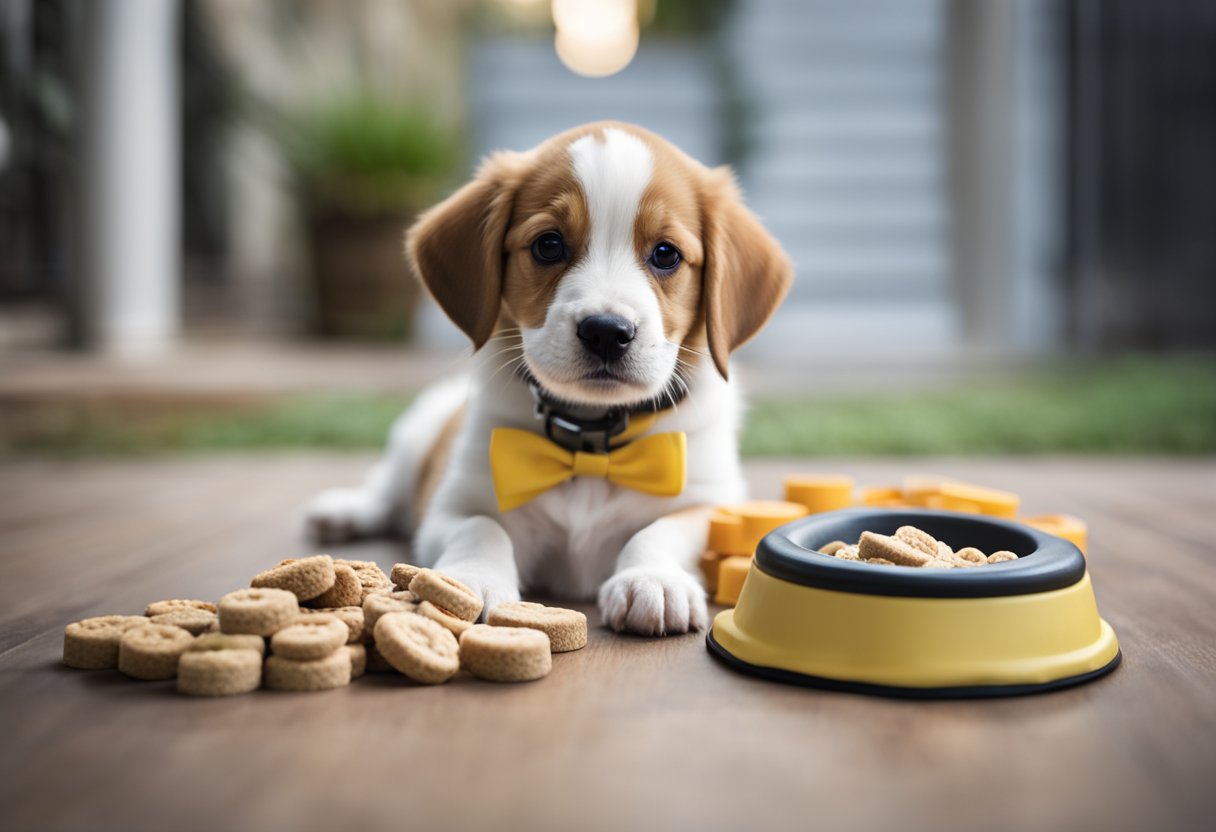
Getting ready to potty train your puppy can seem like a daunting task, but with the right preparation, it can be a smooth and successful process. Here are some tips to help you prepare for potty training your puppy.
Choosing the Right Time
The first step in preparing for potty training is to choose the right time. It’s important to wait until your puppy is at least 8 weeks old before starting potty training. At this age, your puppy has better control over their bladder and bowels and can start to understand basic commands.
You should also choose a time when you can dedicate a few weeks to potty training. Consistency is key, so it’s important to establish a routine and stick to it. If you have a busy schedule, it may be best to wait until you have some time off work or can enlist the help of a family member or friend.
Gathering Supplies
Before you start potty training, you’ll need to gather some supplies. Here are some of the essentials:
- Puppy pads or newspaper: These will be used to create a designated potty area for your puppy.
- Treats: Positive reinforcement is important in potty training, so make sure you have plenty of treats on hand.
- Leash and collar: You’ll need these to take your puppy outside to go potty.
- Enzymatic cleaner: Accidents will happen, so it’s important to have a cleaner that can eliminate odors and stains.
Establishing a Routine
Establishing a routine is crucial in potty training your puppy. Dogs thrive on routine and consistency, so it’s important to create a schedule and stick to it. Here are some tips for establishing a routine:
- Take your puppy outside to go potty first thing in the morning, after meals, and before bedtime.
- Use a specific command, such as “go potty,” to let your puppy know what you want them to do.
- When your puppy goes potty outside, give them plenty of praise and a treat.
- If your puppy has an accident inside, clean it up with an enzymatic cleaner and avoid scolding or punishing them.
By choosing the right time, gathering the necessary supplies, and establishing a routine, you can set yourself and your puppy up for success in potty training.
Executing the Training
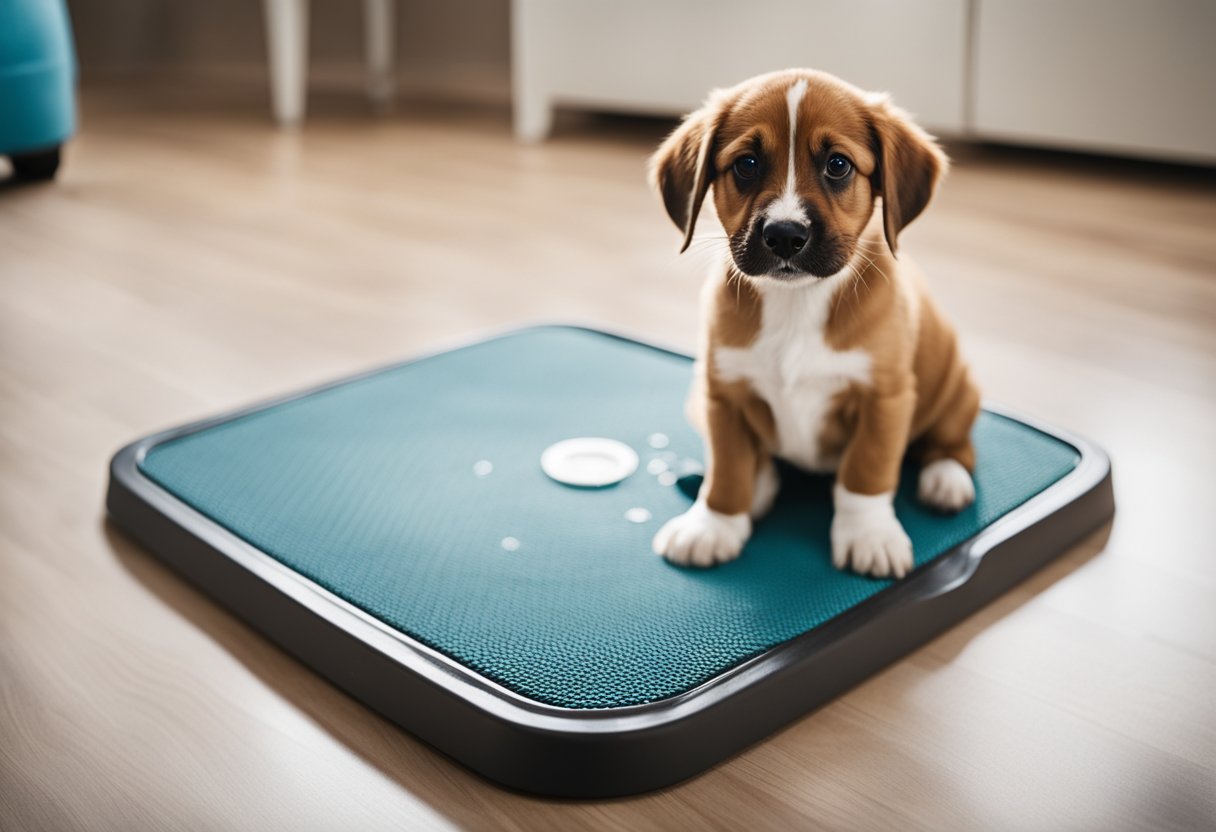
Once you have prepared for potty training your puppy, it’s time to start the actual training. Here are some key points to keep in mind as you begin:
Recognizing the Signs
To start, it’s important to recognize the signs that your puppy needs to go potty. These signs may include sniffing around, circling, or whining. When you notice these signs, take your puppy outside to their designated potty area immediately.
Positive Reinforcement
Positive reinforcement is a key part of potty training your puppy. When your puppy goes potty in the designated area, give them lots of praise and a treat. This reinforces the behavior and encourages them to continue going potty in the right place.
Handling Accidents
Accidents are bound to happen during potty training, so it’s important to handle them appropriately. If you catch your puppy in the act of going potty in the wrong place, interrupt them with a loud noise and immediately take them outside to their designated potty area. If you find an accident after the fact, clean it up thoroughly to remove any odor that may attract your puppy to go potty in the same spot again.
Consistency and Patience
Consistency and patience are key to successful potty training. Stick to a regular schedule for taking your puppy outside to their designated potty area, and be patient as they learn. It may take some time for your puppy to fully understand what is expected of them, but with consistency and patience, they will eventually get the hang of it.
By recognizing the signs, using positive reinforcement, handling accidents appropriately, and staying consistent and patient, you can successfully potty train your puppy. Keep in mind that every puppy is different, so it may take some trial and error to find what works best for your furry friend.
Resources
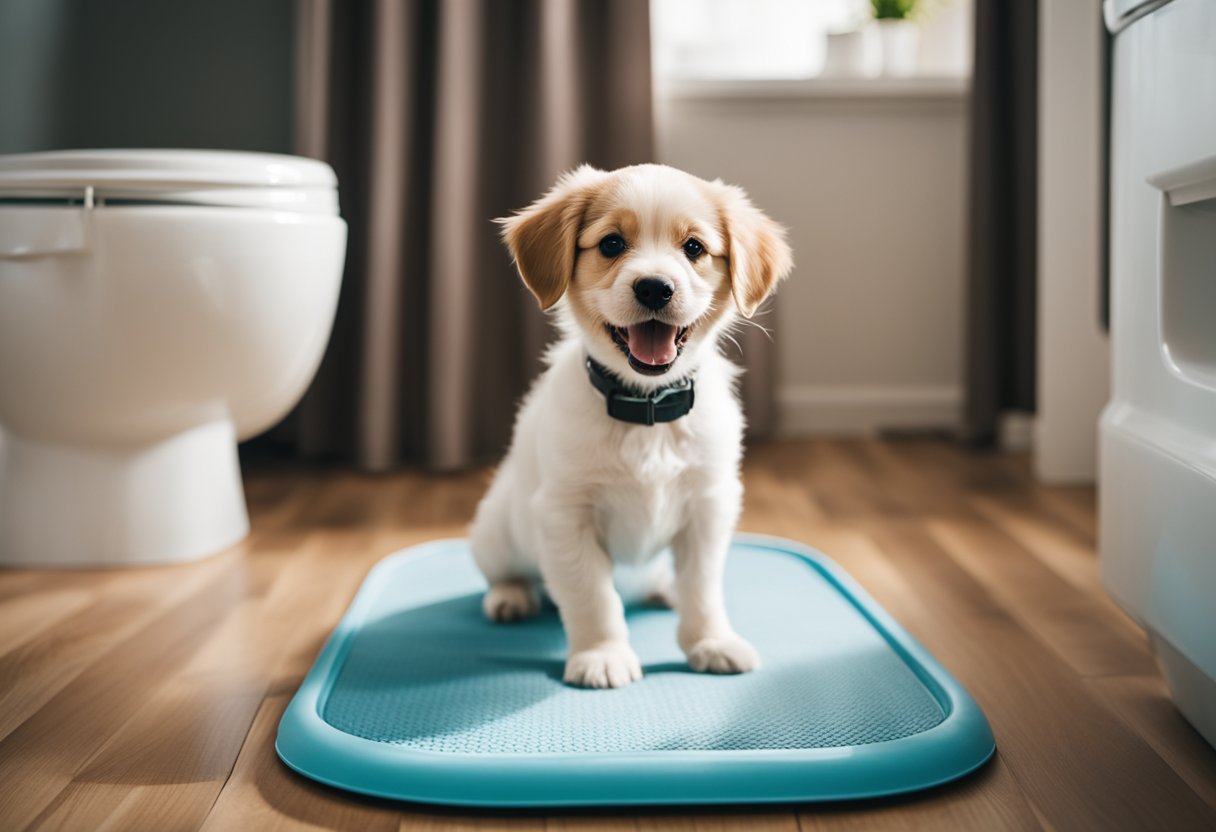
When it comes to potty training your puppy, there are many resources available to help you along the way. Here are some helpful resources to get you started:
1. Puppy Potty Training Guides
There are many guides available that can help you learn how to properly potty train your puppy. These guides can provide you with step-by-step instructions on how to teach your puppy to go potty outside, as well as tips and tricks for dealing with accidents and other common issues. Some popular guides include How to Potty Train Your Puppy by the American Kennel Club and Potty Train Your Dog In 6 Days by TrainPetDog.com.
2. Online Forums
Online forums can be a great resource for getting advice and support from other puppy owners who are going through the same experience as you. Some popular forums include Reddit’s Puppy101 and The Dog Forum.
3. Training Classes
If you’re struggling to potty train your puppy on your own, consider enrolling in a training class. These classes can provide you with hands-on instruction and guidance from experienced trainers, as well as an opportunity to socialize your puppy with other dogs. Check with your local pet store or animal shelter to find classes in your
Conclusion
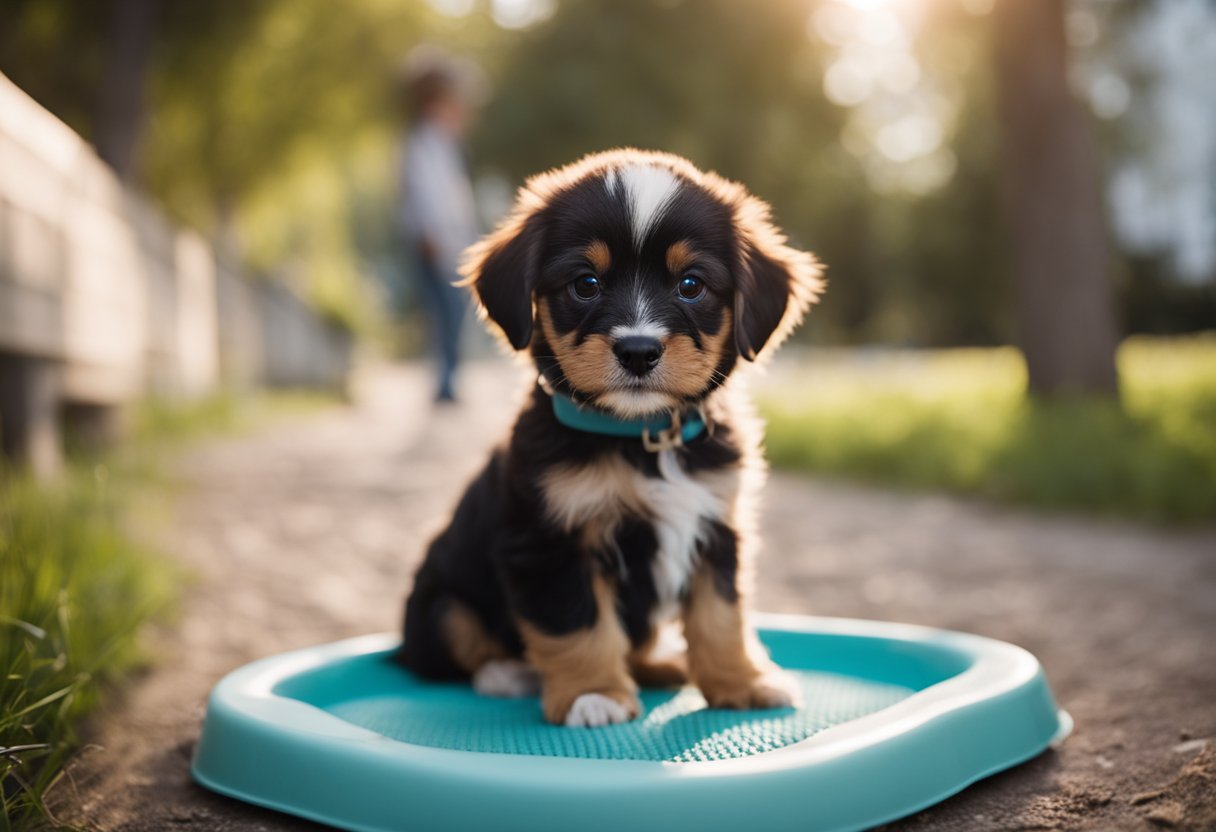
Potty training your new puppy takes patience, consistency, and positive reinforcement. By following the steps outlined in this article, you can successfully potty train your puppy and enjoy the benefits of a well-trained dog.
Remember to always use positive reinforcement when your puppy goes potty outside, such as treats, praise, and playtime. Avoid scolding or punishing your puppy for accidents, as this can lead to fear and anxiety.
It’s important to establish a routine and stick to it, including regular potty breaks and feeding times. Keep a close eye on your puppy and watch for signs that they need to go potty, such as sniffing around or circling.
Using a crate or confinement area can also be helpful in preventing accidents and establishing a routine. Make sure the crate is the appropriate size for your puppy and never use it as a form of punishment.
Remember that every puppy is different and may learn at their own pace. Be patient and consistent in your training, and your puppy will eventually learn to go potty outside on their own.
Overall, potty training your puppy is an important step in raising a happy and well-behaved dog. With patience, consistency, and positive reinforcement, you can successfully potty train your puppy and enjoy a lifetime of companionship.
Frequently Asked Questions
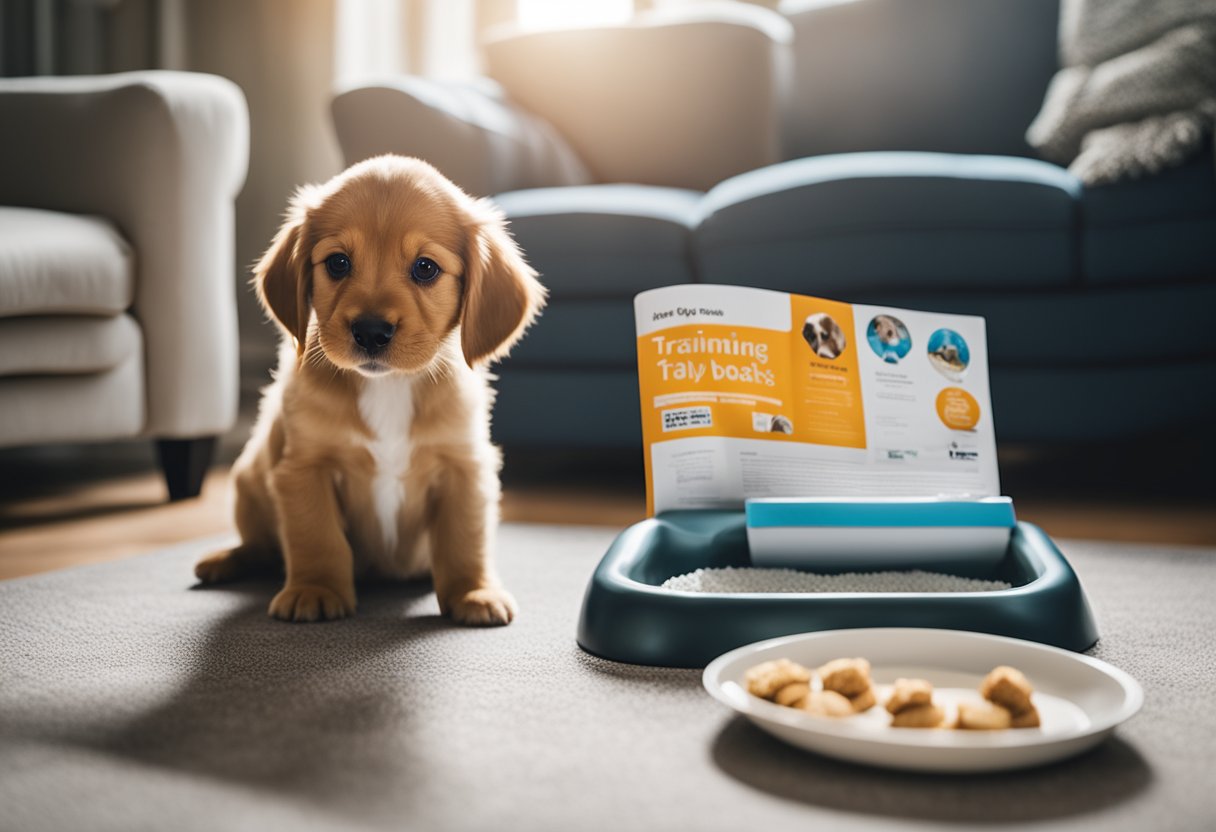
How can you toilet train a puppy within a week?
Toilet training a puppy within a week is a challenging task, but it is possible with consistency and patience. You need to establish a routine and stick to it. Take your puppy out to the designated potty area every hour, including after meals, naps, and playtime. Praise and reward your puppy immediately after they successfully eliminate in the right spot. Avoid punishing your puppy for accidents, as it can cause anxiety and confusion.
What are the steps to potty training a puppy to use the outdoors?
Potty training a puppy to use the outdoors requires a lot of time and effort. Start by designating a specific area outside for your puppy to eliminate. Take your puppy out on a regular schedule and wait patiently for them to finish. Use a specific command like “go potty” to help your puppy understand what is expected of them. Reward your puppy with praise and treats immediately after they finish eliminating in the designated area.
What is the average duration for successfully potty training a puppy?
The duration for successfully potty training a puppy varies from one puppy to another. On average, it can take anywhere from four to six months for a puppy to be fully potty trained. Consistency, patience, and positive reinforcement are key to successful potty training.
Can you potty train a puppy using pads and if so, how?
Yes, you can potty train a puppy using pads. Start by designating a specific area in your home for the puppy to use the pads. Take your puppy to the designated area frequently and wait for them to use the pads. Praise and reward your puppy immediately after they successfully eliminate on the pads. Gradually move the pads closer to the door and eventually outside to help your puppy transition to eliminating outdoors.
At what age is a puppy typically able to be fully house trained?
Puppies are typically able to be fully house trained between four and six months of age. However, some puppies may take longer to be fully trained. It is important to establish a routine and stick to it consistently.
What are effective methods for house training a puppy quickly?
Effective methods for house training a puppy quickly include establishing a routine and sticking to it, using positive reinforcement, crate training, and closely monitoring your puppy’s behavior. Consistency and patience are key to successful house training.
